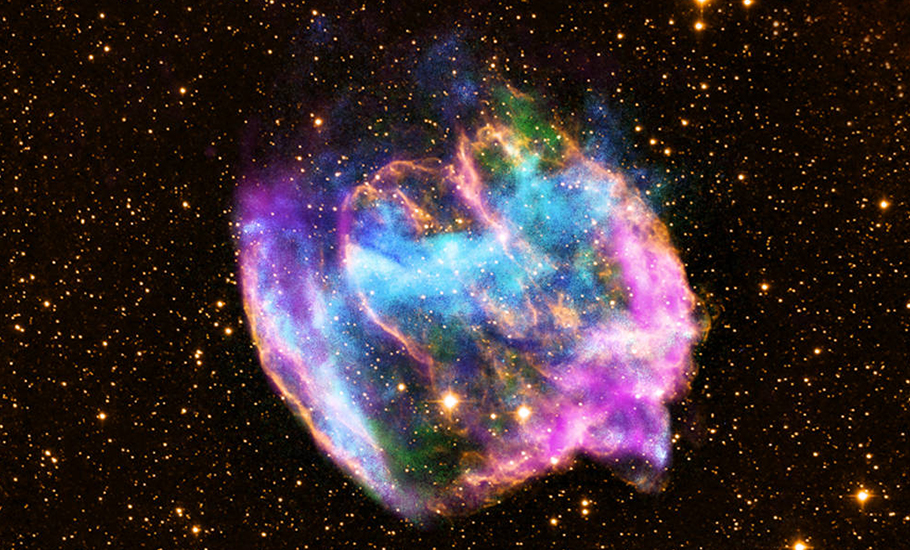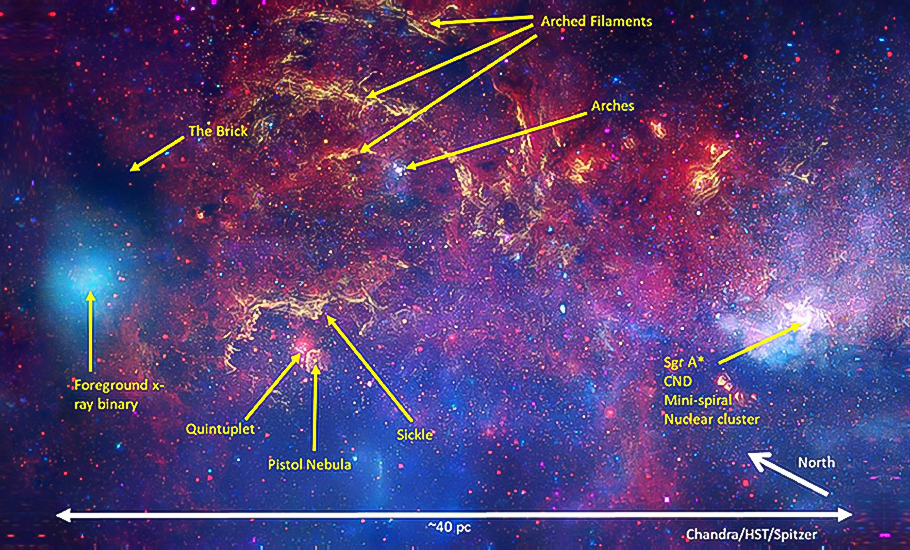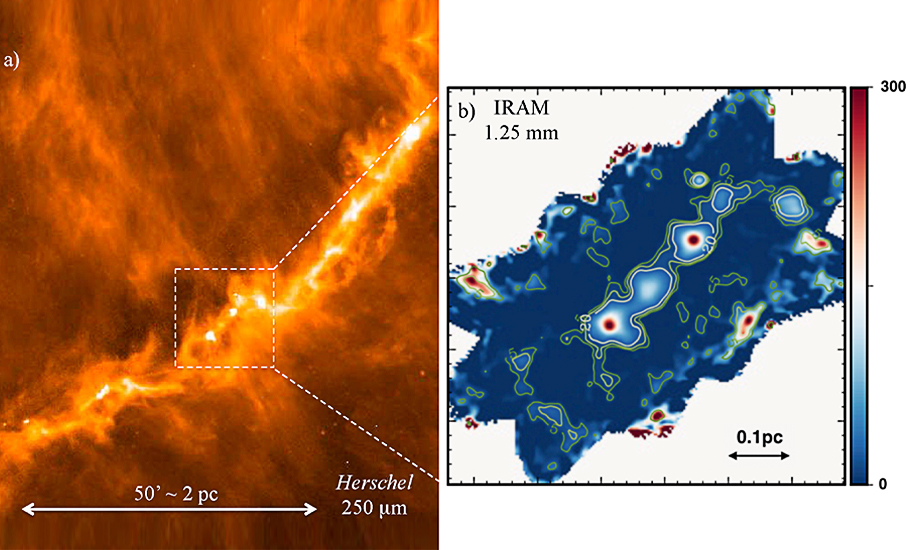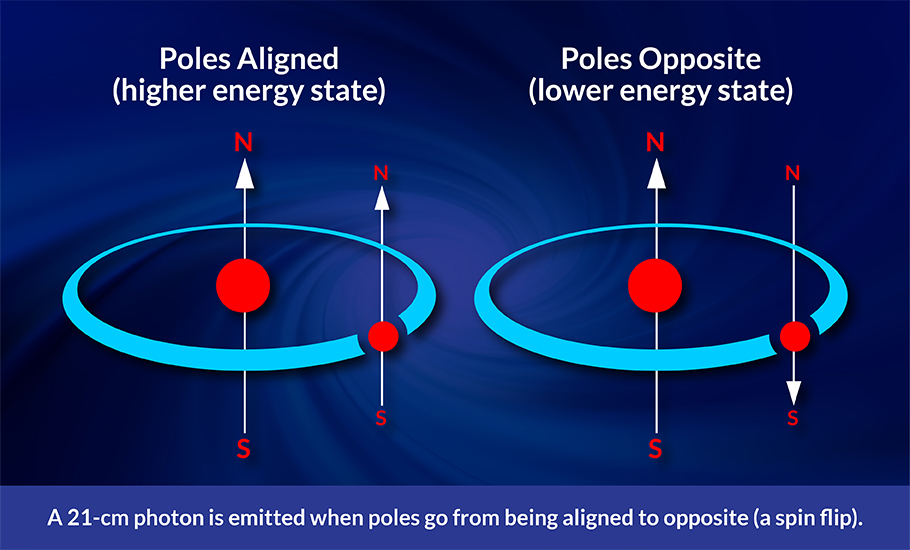
- Home
- News
- Analysis
- States
- Perspective
- Videos
- Education
- Entertainment
- Elections
- World Cup 2023
- Features
- Health
- Business
- Series
- Economy Series
- Earth Day
- Kashmir’s Frozen Turbulence
- India@75
- The legend of Ramjanmabhoomi
- Liberalisation@30
- How to tame a dragon
- Celebrating biodiversity
- Farm Matters
- 50 days of solitude
- Bringing Migrants Home
- Budget 2020
- Jharkhand Votes
- The Federal Investigates
- The Federal Impact
- Vanishing Sand
- Gandhi @ 150
- Andhra Today
- Field report
- Operation Gulmarg
- Pandemic @1 Mn in India
- The Federal Year-End
- The Zero Year
- Premium
- Science
- Brand studio
- Home
- NewsNews
- Analysis
- StatesStates
- PerspectivePerspective
- VideosVideos
- Entertainment
- ElectionsElections
- Sports
- Loading...
Sports - Features
- BusinessBusiness
- Premium
- Loading...
Premium

Imprints of ancient supernova explosions found. What it means

When it drizzles and the drops fall on a dusty window pane, they create spotted blisters. The plunging raindrop explodes, hitting the pane’s surface, driving the dirt away. The powdery dust particles are blown away and appear like a popped bubble. When massive stars end their life in a big flare-up called a supernova, they leave behind an exotic neutron star or a mysterious black hole....
When it drizzles and the drops fall on a dusty window pane, they create spotted blisters. The plunging raindrop explodes, hitting the pane’s surface, driving the dirt away. The powdery dust particles are blown away and appear like a popped bubble.
When massive stars end their life in a big flare-up called a supernova, they leave behind an exotic neutron star or a mysterious black hole. Shock waves from the dying massive stars blow the interstellar gas away. Just like the bubble that pops on the window pane when raindrops hit the surface, the shock waves from the dying stars impact the hydrogen gas that pervades the interstellar medium (ISM).
A group of astronomers, led by Juan Diego Soler of the Italian National Institute for Astrophysics (INAF), has discovered the marks in the ISM of our galaxy created by the explosion of ancient dying stars.
Hydrogen that constitutes the bulk of the stars pervades the galaxy. But the atoms of hydrogen are distributed thinly all across the galaxy. How the diffused hydrogen coalesces into massive stars is an enigma. Finding these imprints “is an important step in understanding the process responsible for the galaxy-scale star formation,” says Prof Ralf S Klessen, theoretical astrophysics at Heidelberg University Germany, co-author of the study.

Not nothing
The interstellar space, the room between stars, is not perfect nothingness. The average density of a galaxy is around one hydrogen atom per cubic centimetre. In interstellar gas clouds, it can be even as high as one lakh molecules per cubic centimetre. Compared to the density of 10^19 molecules in every cubic centimetre (1 followed by 19 zeros) in the air at the ground level, these densities are pretty close to nothing.
Yet these sparsely distributed atoms go into making the dense stars. Once they coalesce to a particular density, gravity can take over. The massed region could attract more matter from the surroundings to slowly condense into a proto-star. How the densities needed for gravity to act emerge is not fully understood.
Radio telescopes revealed one of the most striking features in our galaxy by observing radiation emitted by neutral hydrogen pervading the galaxy. An intricate network of filamentary structures spreads like a spider’s web across the galaxy. Some of the filaments are small, just a few light-years long. Few are long threads extending over hundreds of light-years. Astronomers speculate that the filamentary structures are a vital stepping stone in star formation.

Cosmic recycle
In the dynamics of the galaxy, filamentary structures materialise. Clumps form in the densest regions. The lumps shrink due to self-gravity. They attract nearby matter, grow immense, and then attract more matter. They become the seeds for proto-stars. Once they become sufficiently massive and compact, a thermonuclear fusion reaction sets in at the core. The star is born.
In the thermonuclear reaction, stars convert hydrogen into heavier atoms like carbon, oxygen, iron, etc. During their lifetime, stars radiate charged particles. These ‘winds’ carry away atoms from the star to the ISM. Once they age and are on their deathbed, they expel materials back into the interstellar medium. Stars explode into either a supernova explosion or a planetary nebula.
Eventually, the materials, including the heavier elements produced in the stars, are recycled in a new generation of stars. When the stars explode, they create a bubble in the ISM, the thick edges of which go on to become filament. Now the filament is enriched with heavier elements. The second-generation stars from such clouds have planets with heavier elements like carbon, oxygen, iron etc. This is the current picture of star formation. Thus filaments are believed to be a key element in the recycling of stellar material.
Filaments
Cold neutral hydrogen is usually in the ground state and does not radiate. However, due to chance collision, the direction of the ‘spin’ of the lone electron can become different from the single proton in the central nucleus. The atom then becomes a tiny little excited. When the atom returns to the ground, the excess energy is radiated as the characteristic radio waves with a wavelength of 21 centimetres (1,420 megahertz). Astronomers call these HI emissions.
This transition is rare, roughly every 10 million years for every hydrogen atom. The rarity is compensated by the enormity of the space. The aggregate mass in one cubic light-year is around 40% the mass of the Sun. Energy by a neutral hydrogen atom is tiny. With nearly 10^65 atoms, in giant ISM clouds, there are almost 10^50 flips per second, enabling 21-cm line emission observable by powerful radio telescopes.

An all-sky survey of neutral hydrogen, called HI4PI (HI means radiation of neutral hydrogen; 4pi is a short form for ‘all sky’) was made a few years back. The survey has provided a wealth of fine details of the large-scale structure of the Milky Way’s gas distribution.
Researchers plodded through the terabytes of data on our galaxy’s neutral hydrogen gas distribution using artificial intelligence image recognition software. They teased out an intriguing pattern. “Most of the filaments in the inner part of the Milky Way were found to be pointing away from the disk of our galaxy,” says Prof Klessen. In contrast, the filaments were mainly horizontal in the outer Milky Way.
“Due to gravity and rotation of the disk, the neutral hydrogen filaments in the outskirts of the Milky Way are mostly oriented in the plane of the disk. The filaments towards the centre are more likely to be vertically oriented, when the neutral ISM is lifted up by several supernovae going off in a star cluster,” explains Associate Professor Prateek Sharma, Department of Physics, Indian Institute of Science, Bangalore. He is not part of this research, though.
Imprint
How come the orientation of the filaments in the inner regions changed? The stars in the inner part of the Milky Way are massive, therefore short-lived, and hence have witnessed a large number of powerful supernovae. Generally, the stars in the outer regions of the Milky Way are not massive and consequently have seen fewer supernovae explosions.
“Supernova explosion launches stellar material into the ISM at nearly ~10,000 km/s speeds affecting its morphology,” says Prateek Sharma. The edges of the bubble remain etched, like the imprint of the feet on sand, in the interstellar gaseous medium, altering the shape of the filament.
“Most supernovae in the Milky Way are associated with relatively young stars and therefore can help trace the star-formation activity. The energy and momentum input from supernovae drives expanding bubbles in the interstellar medium and outflows from the Galactic disk, and by doing so, change the orientation of the observed filaments,” says Prof Klessen.
Death triggers birth
A supernova explosion expels the material from the bubble’s centre, making it emptier. “However, as the bubble expands into the ambient interstellar medium, it sweeps up gas into a dense shell. When the shells of two neighbouring bubbles collide, the conditions for star formation to set in may be reached, and we witness the birth of a new stellar cluster,” says Prof Klessen. The ISM materials are recycled from stars to gas that go into the birth of next-generation stars.
Our Sun is said to be a second-generation star, a star born from the ashes of a dead star. “Observations have shown young stars forming in the dense shells of supernovae,” concurs Prateek Sharma, adding, “There is strong evidence that a supernova went off just a few million years before the age of the solar system and the formation of the sun may have been triggered by supernovas.”
“Our results indicate that the HI filamentary structures provide insight into the dynamical processes shaping the Galactic disk,” says Prof Klessen, and help “find and characterise regions of star formation”.

